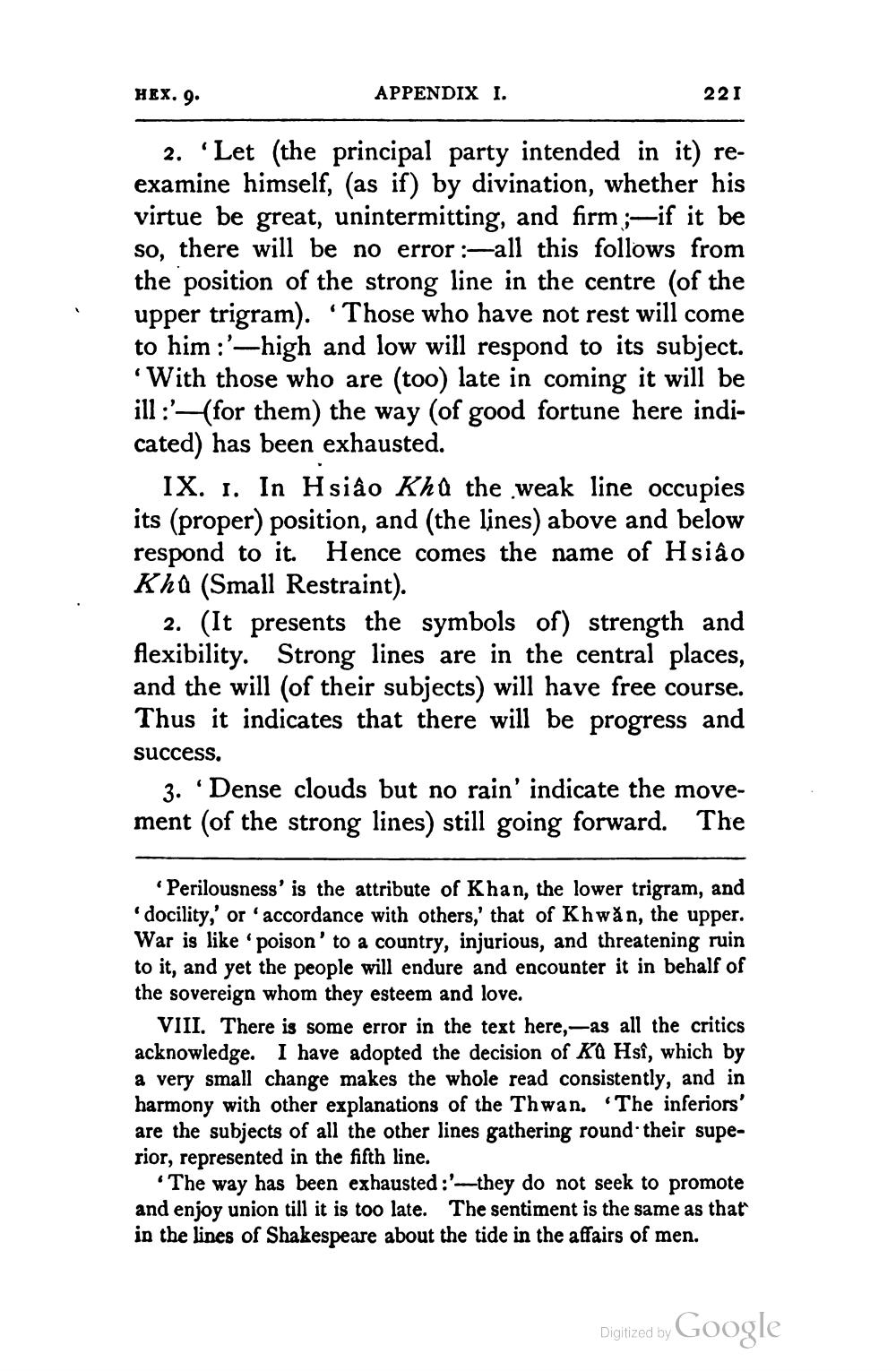________________
HEX. 9.
APPENDIX I.
221
2. 'Let (the principal party intended in it) reexamine himself, (as if) by divination, whether his virtue be great, unintermitting, and firm ;-if it be so, there will be no error:all this follows from the position of the strong line in the centre (of the upper trigram). Those who have not rest will come to him :'-high and low will respond to its subject.
With those who are (too) late in coming it will be ill :'-(for them) the way (of good fortune here indicated) has been exhausted.
IX. 1. In Hsiao Khu the weak line occupies its (proper) position, and (the lines) above and below respond to it. Hence comes the name of Hsiao Kha (Small Restraint).
2. (It presents the symbols of) strength and flexibility. Strong lines are in the central places, and the will (of their subjects) will have free course. Thus it indicates that there will be progress and success.
3. 'Dense clouds but no rain' indicate the movement (of the strong lines) still going forward. The
Perilousness' is the attribute of Khan, the lower trigram, and docility,' or 'accordance with others,' that of Khwăn, the upper. War is like 'poison' to a country, injurious, and threatening ruin to it, and yet the people will endure and encounter it in behalf of the sovereign whom they esteem and love.
VIII. There is some error in the text here, -as all the critics acknowledge. I have adopted the decision of Ka Hsi, which by a very small change makes the whole read consistently, and in harmony with other explanations of the Thwan. "The inferiors' are the subjects of all the other lines gathering round their superior, represented in the fifth line.
The way has been exhausted :'--they do not seek to promote and enjoy union till it is too late. The sentiment is the same as that in the lines of Shakespeare about the tide in the affairs of men.
Digitized by Google




